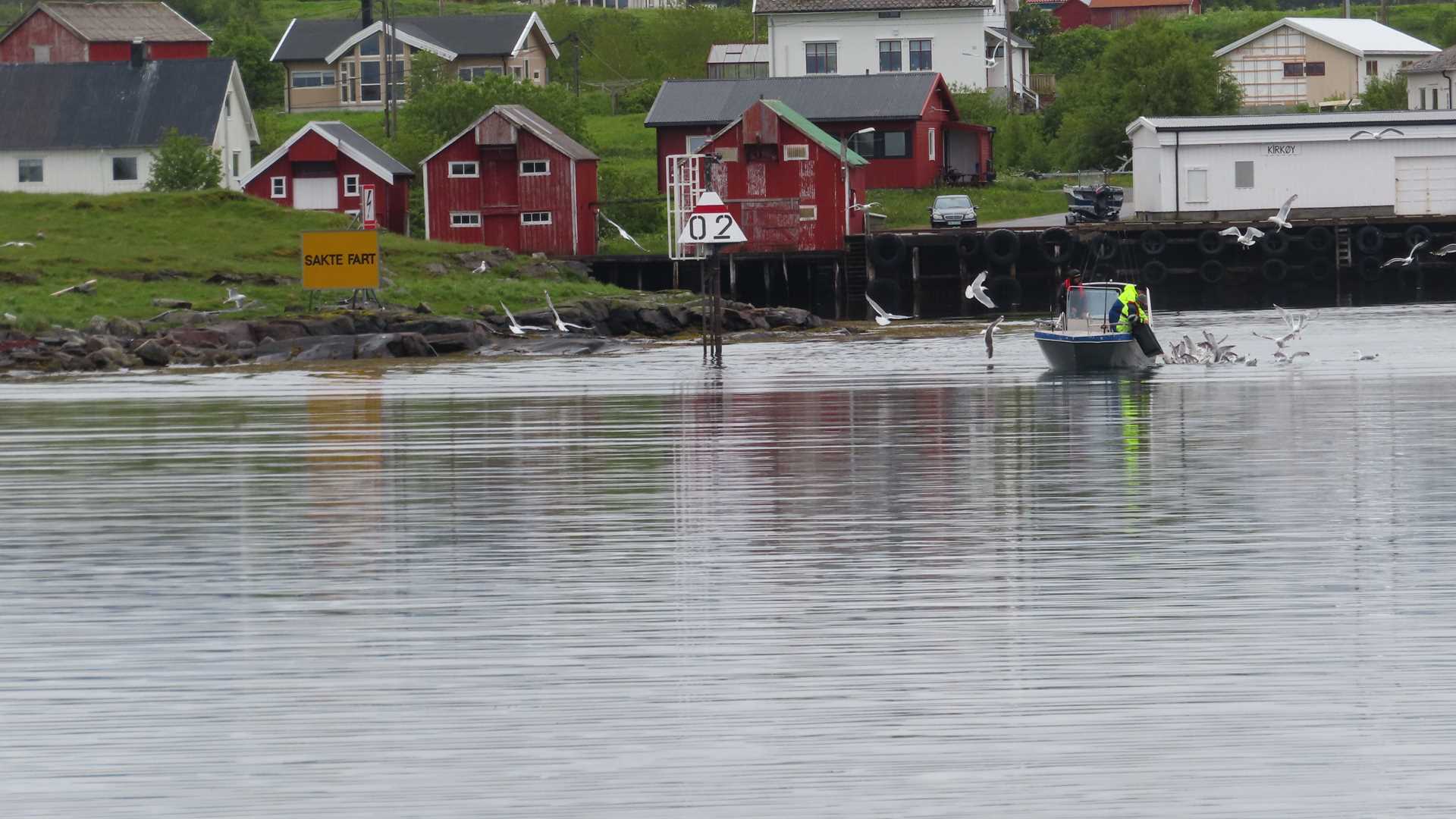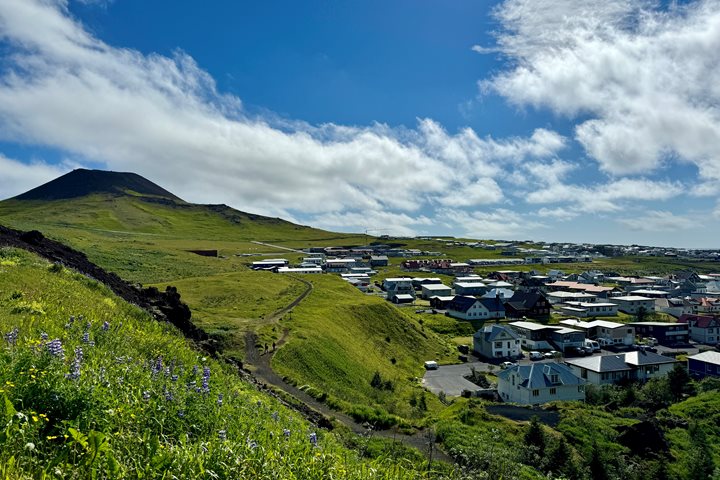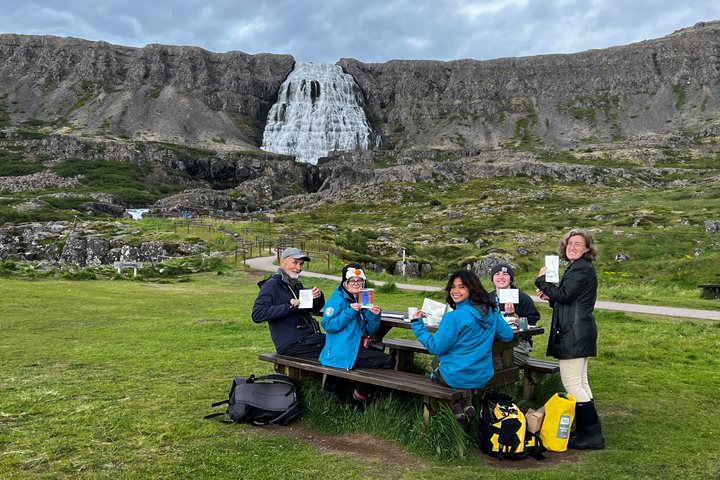Our visit to Vega was a pleasure in every way, including the rain that is such a natural part of a place that is famous as a home for ducks. The Vega archipelago is home to thousands of eider ducks that nest there in relative safety. Here their main danger is the great black-backed gull that preys on their ducklings. The Vega archipelago is composed of thousands of islands and islets. As many as 1,000 years ago, inhabitants encouraged these downy ducks to nest by fashioning nests from dry seaweed and protecting them from four-legged predators. In return, the ducks provided them with eggs and eider down; the down was collected from the nests after the ducklings went down to the sea with their mothers, cousins, and aunties. In 2004, Vega was designated a World Heritage Site due to its one-of-a-kind eider duck nesting area.
We did not visit the eider duck nesting areas, but we hiked over the countryside marveling at the lush growth of trees—mostly birch, shrubs, and wildflowers that were bursting into bloom. Varied and numerous birds sang as they hopped and flitted through the trees. We visited a wonderful eider museum, where we were served coffee and delicious waffles topped with sour cream and jam. In the afternoon, we sailed off into the Norwegian Sea, setting our course for the Shetland Islands. We soon found our ship in the midst of a large pod of orcas.







